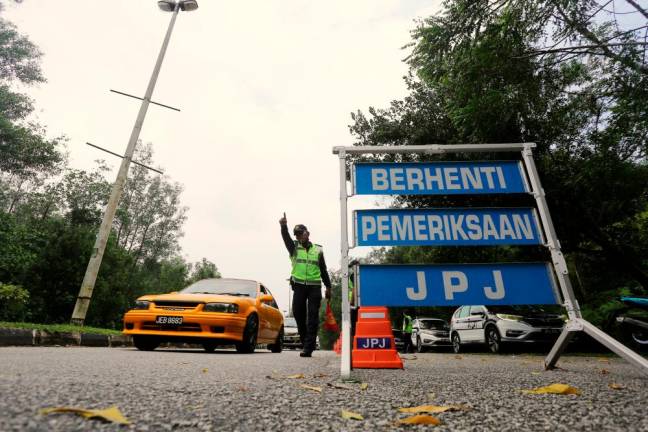PETALING JAYA: MARC Ratings has projected Malaysia’s gross domestic product (GDP) growth for first-quarter 2022 (Q1’22) at 3.9%, despite the economy facing external headwinds, on accelerating recovery momentum.
Bank Negara Malaysia (BNM) will announce the economic growth figures today.
MARC said indicators suggest that Malaysia’s economic recovery remains on track and the momentum may have picked up slightly in Q1’22. The spike in the number of positive Covid-19 cases in the middle of the first quarter seems to have had limited impact on consumption. Distributive trade sales recorded a hefty growth of 8.0% year-on-year (y-o-y) on average in the first two months of 2022 compared with 5.1% in Q4’21, while the unemployment rate is declining gradually, coming in at 4.1% in Q1’22 (Q4’21 4.3%).
“However, Q1’22 growth would have been much higher sans a slowdown in industrial production (4.5% y-o-y on average in Q1’22 versus 7.0% in Q4’21). On balance, we still project firmer real GDP growth of 3.9% y -o-y in Q1’22 compared with 3.6% recorded in Q4’21,” MARC explained in a report yesterday.
MARC expects growth to strengthen throughout the next two quarters, accentuated by favourable base effects, supportive fiscal policies, reopening of international borders and lifting of other pandemic-related curbs.
Growth in domestic demand appears clear and imminent, MARC said It foresees considerable private consumption growth in the coming months on pent-up demand and income support.
Continued strength in the labour market supports this notion as it predicts a lower unemployment rate at 4.0% for 2022 (2021: 4.6%). In addition, Google Mobility data show footfalls in retail and recreation have returned to prepandemic levels since the end of April 2022, indicating an ameliorating overall sentiment amid a higher propensity to consume.
“Despite this optimistic viewpoint, we cannot discount the main threats to growth; these are not expected to dissipate anytime soon. Output growth will remain below potential amid the ongoing supply-side disruptions, which have led to higher input prices, labour shortages and a rapidly changing external outlook.
“Our headline inflation projection has been revised upwards to 2.7% for 2022 (2021: 2.5%), reflecting the intense supply-side inflationary pressures in the coming months despite active government intervention. Furthermore, the rising living and borrowing costs would act as speed bumps to consumer demand, though government measures such as price controls, the special Employees Provident Fund withdrawal and the increase in minimum wage could cushion households against it,” MARC said.
On the external front, the weaker prospects of major economies are a concern, with the International Monetary Fund downgrading its global growth forecast by 0.8 percentage points to 3.6% in 2022 (2021E: 6.1%). On the one hand, prolonged and heightened geopolitical tensions, China’s economic slowdown, and the US Federal Reserve’s aggressive monetary tightening prospects will add to a potent mix of downside risks to Malaysia’s overall trade and national output performance. On the other hand, sharp upward adjustments in commodity prices, if sustained, will provide some relief to exports.
MARC perceived the rate increase by BNM as a defence against significant capital outflows and ringgit depreciation amid the higher interest rates in the US. It will also help keep inflation in check as demand improves.
“We opine that a second interest rate hike by BNM in H2’22 is highly probable. Upon closer examination of the latest Monetary Policy Statement (MPS), there is an increasing number of positive words such as ‘firmer’, ‘strengthen’ and ‘improve’, implying BNM’s growing confidence in the domestic economy’s near-term prospects. Nevertheless, we expect that the eventual normalisation of monetary policy will be gradual, as reiterated in the MPS, to ensure sustainable economic recovery.”
For policy normalisation to be well-measured, MARC said, the unemployment rate (March 2022: 4.1%) should decline significantly in the coming months.
“For a developing economy such as Malaysia, raising the OPR amid an elevated unemployment rate could be challenging from the standpoints of wage growth, the government’s fiscal position and social stability. Therefore, we expect fiscal policy to correspond with the rising interest rate environment through higher government spending or improvements in investment prospects in the coming months.”













